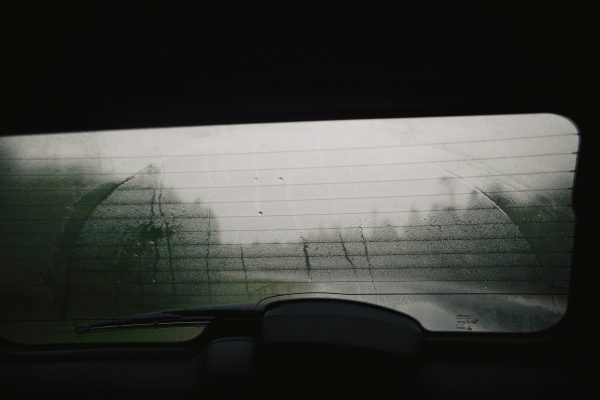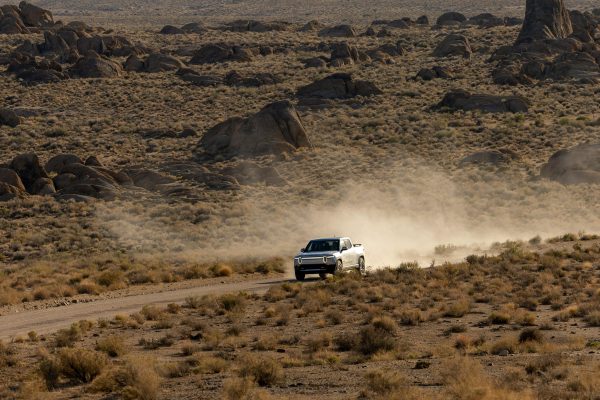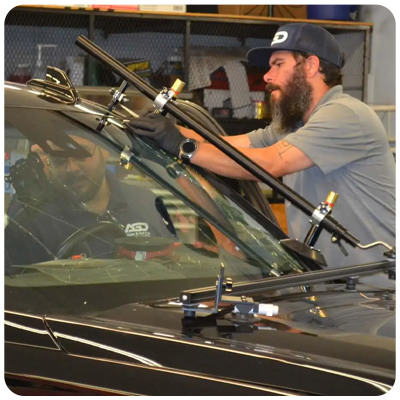Rear Defroster: How It Works and What Damages the Grid
Rear visibility is one of those things drivers don’t think about – until you are driving along and suddenly you realize you can’t see out the back of your car. A functioning rear defroster isn’t just a convenience; it’s a key auto glass safety feature. It clears fog, frost, and condensation, allowing drivers to see…
Side and Rear Auto Glass: Safety Roles, Replacement Basics, and Costs
When people think about car glass, they often picture the windshield – but the side and rear windows play equally important roles. From safety to structural integrity to comfort to aesthetic appeal, side and rear auto glass are more than just transparent panels. Knowing how these windows function and what’s involved in replacing them can…
Choosing the Right Windshield: OEM or Aftermarket?
OEM vs Aftermarket Auto Glass – What’s the Difference? In plain terms, OEM (Original Equipment Manufacturer) glass comes from the same supplier that built your factory windshield, to automaker-approved specs. Aftermarket glass is produced by other manufacturers to industry standards. Both can be safe; the “right” answer in OEM vs aftermarket auto glass depends on…
Clear Vision in the Desert: Protectin Against Windshield Sand Pitting
Phoenix roads throw a steady spray of grit. Over time, those micro-impacts create windshield sand pitting – thousands of tiny craters that scatter sunlight and headlights into glare. Lane lines look washed out, brake lights bloom, and your eyes work harder to keep focus. Even without a crack, severe pitting can make daytime and nighttime…
Can You Drive After a Windshield Replacement?
Your windshield isn’t just a view—it helps the roof hold its shape in a crash and supports correct airbag deployment. Right after replacement, the adhesive is still curing. That’s why knowing when you can drive after windshield replacement is more than convenience; it’s part of making sure the glass will protect you if the unexpected…
Window Tint Aftercare: What To Do (and What To Skip)
Fresh tint looks its best after it cures—when install moisture evaporates and the adhesive settles. Smart window tint aftercare is simple: give it time, clean gently, and protect the edges so they stay tight. Curing: What’s Normal, What’s Not Right after install, a light haze or a few “water pockets” are normal. In warm, dry…
Rear Window Defroster Repair: Lines, Tabs, and Fixes
A working rear defroster should clear fog or frost evenly in minutes. If you’re left with stubborn stripes—or the whole window stays cold—you’re a good candidate for rear window defroster repair. Window Defroster Repair – How The Grid Works (And Fails) Those bronze lines on the glass are conductive paint. When powered, they warm the…
Windshield Pitting Repair: The Invisible Glare Problem
If sunset turns your windshield into a haze of halos and starbursts, you’re likely dealing with pitting—thousands of tiny surface impacts that scatter light. Windshield pitting repair isn’t about filling one crack; it’s about deciding when surface wear crosses from annoying to unsafe. What Causes The Haze (And Why It’s Worse At Night) Highways, construction…
Signs Your Windshield Repair Wasn’t Done Correctly
A poorly performed windshield repair might not show immediate problems—but over time, it can lead to visibility issues, water damage, or even a failed safety inspection. If something feels “off” after your vehicle has been serviced, it’s worth checking for signs your windshield repair wasn’t done correctly. Signs Your Windshield Repair Was Done Improperly 1….
How to Protect Your Auto Glass in a Hailstorm
Arizona may be known for its dry climate, but monsoon season brings with it intense wind, rain—and yes, hail. Even small hailstones can crack or shatter your windshield and windows if you’re caught off guard. Knowing how to protect auto glass in a hailstorm can save you from unexpected repair bills and keep you safer…
How to Identify and Address Side Mirror Damage
Your side mirrors may not seem like a big deal—until one’s cracked, hanging off, or completely missing. These small but essential parts of your vehicle play a big role in your safety and awareness on the road. If you suspect side mirror damage, it’s best to act fast before a minor issue turns into a…
Laminated vs. Tempered Glass: Which Is Best for Your Vehicle?
When it comes to vehicle safety, not all auto glass is created equal. Most cars are fitted with a combination of laminated and tempered glass, each serving a distinct purpose. But what’s the difference—and which is better for your vehicle? Let’s take a closer look at how these two types of glass compare in terms…












